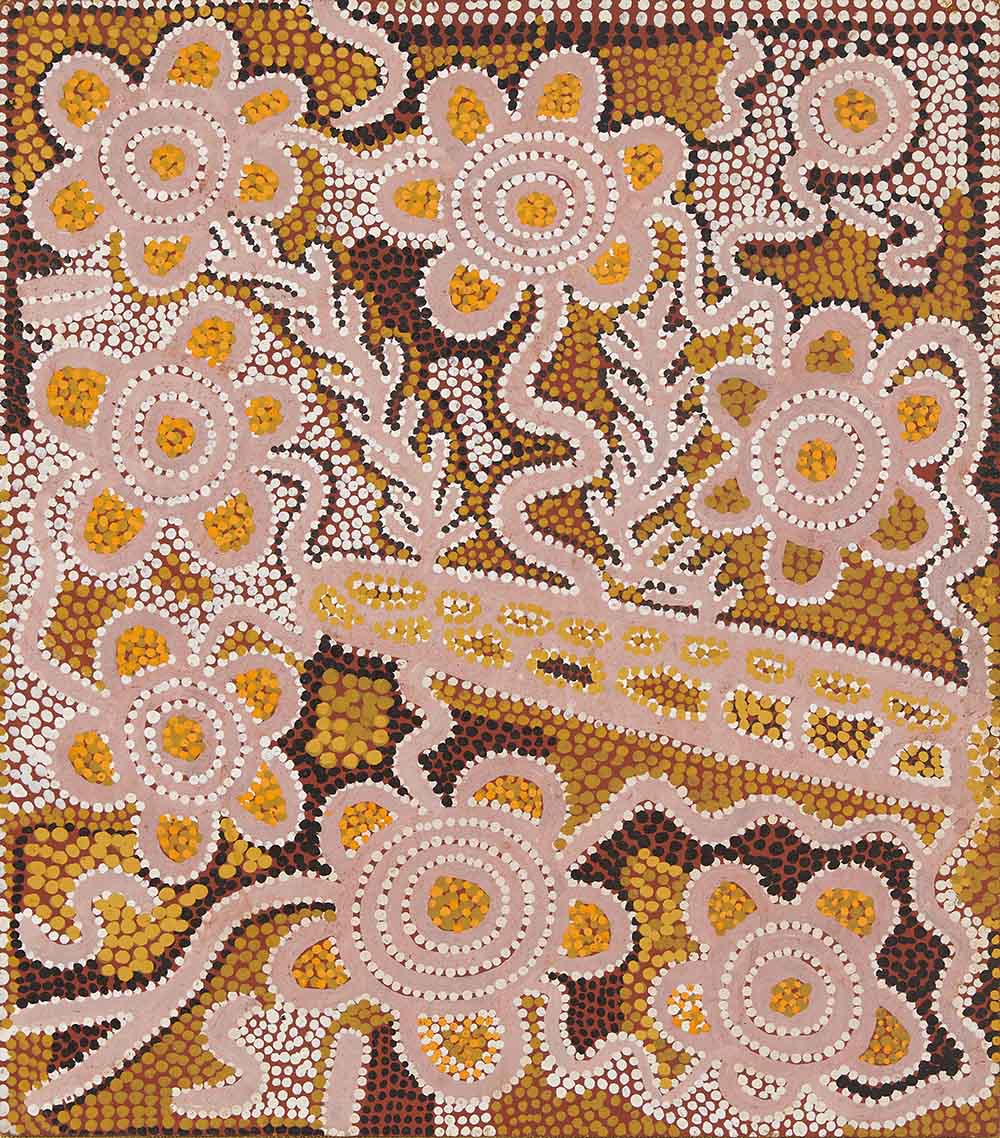For appreciators, admirers, and observers of Indigenous Australian art, there is a vast array of visual information to absorb. In many situations, we seek a deeper understanding of the imagery. The Papunya Tula painting style, for example, is derived directly from the artists’ knowledge of traditional ceremony. As this imagery of a sacred nature was not necessarily intended for public broadcast, many artists developed conventional symbols with multiple meanings allowing them to describe their work without revealing sacred stories to those who don’t possess the rights to their significance. (1)
Here we take a look at five Indigenous paintings both recently sold and pending auction at Leonard Joel and the symbols, or ‘hieroglyphs’ as Geoffrey Bardon terms them, that act as affirmations of story or place:

Corroboree men, as shown through the ‘U’ shapes, sit around campfires in caves as shown through the circular forms in seven different spots across the painting. The wavy lines connecting them are the tracks of the Frog Spirit Beings as well as the rain outside. In the upper right we see the waterhole shown through isolated concentric circles.

At the top of this painting, we can see the rockhole site shown through the concentric circles. Either side are two men, as shown by the two ‘U’ shapes. Coming from the rockhole is snake vine, which was often used as rope or twine, as shown through the wavy lines with branched endings. Flanking the painting either side are two straight lines, which are the sandhills.

This is a painting of the Ngapa (rain/water) Dreaming for Tjupurrula at Waturlpunyu and is associated with the Jardiwarnpa (Snake Dreaming) ceremonies. The concentric circles represent rockholes, within which lives Warnayarra, a large watersnake. The trees are shown through the larger straight lines whilst the wavy and curved lines represent the water as well as the paths of the creation ancestors. The small straight lines are small clouds.

At the centre of this painting is the waterhole (kurtal), home to many ceremonies. Wanayarra, the Rainbow Snake, lives inside it and is called upon when water is needed in the drought. Either side we see the two goannas who were here in the Dreamtime and held ceremonies here, and the sandhills as the wavy lines at the top and bottom.

Minyilli, Near Kiwirrkurra, Western Australia 1997
From the National Australian Bank Art Collection, forthcoming auction, 22 August 2022
Elizabeth here depicts the site where her grandfather died. She shows a number of waterholes in the top right, as well as one that has dried out in the middle with the black centre which is where bush tomato (pura) can be collected. We see a campsite with the fire upper left and a digging stick (wanna) sitting horizontally next to it. In the bottom left we see a large coolamon, which is a wooden dish, full of food.
(1) Caruna, W., Aboriginal Art, Thames and Hudson, Singapore, 1993, p.109-110
OLIVIA FULLER / Head of Art
July 2022
